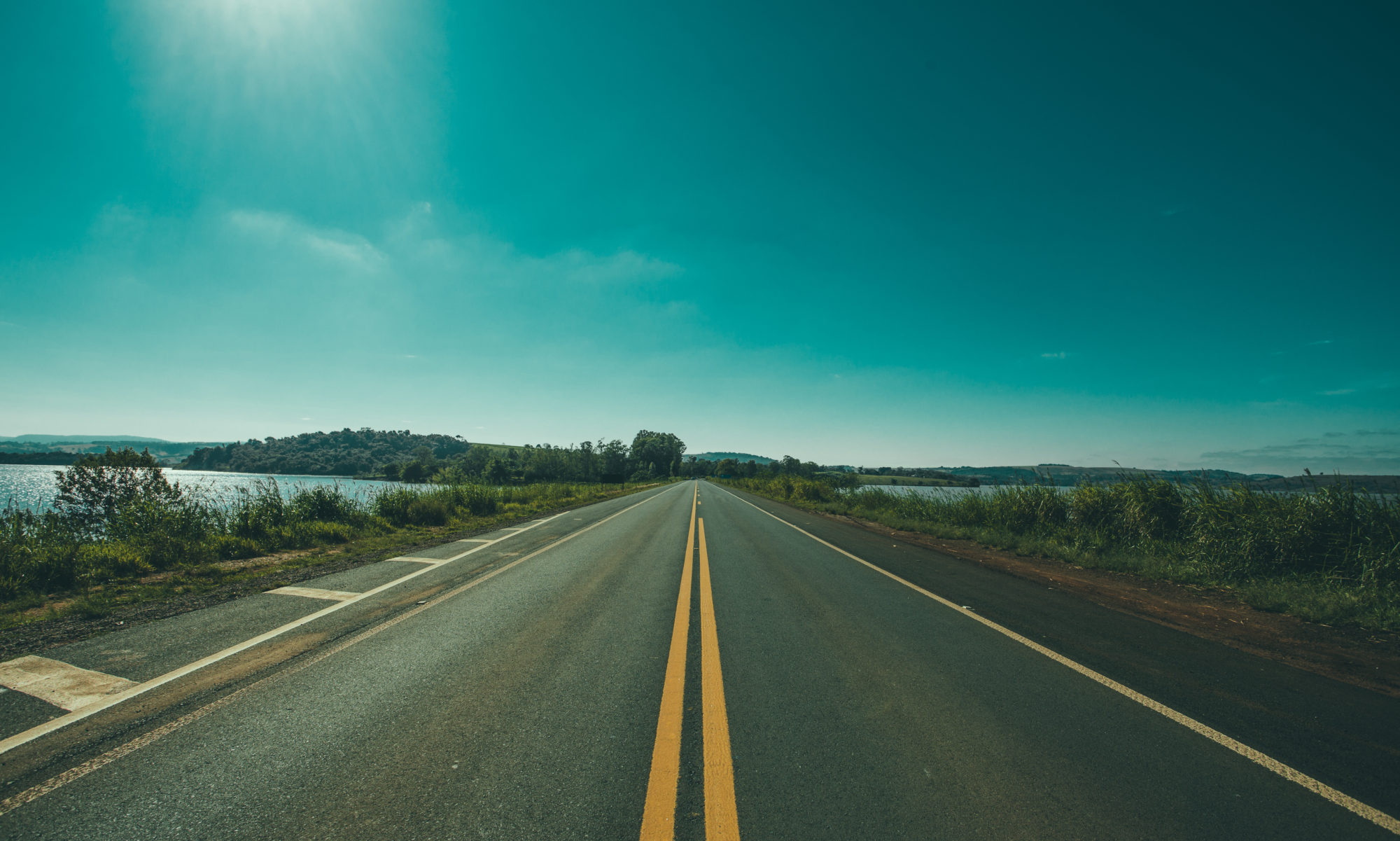From Kyrenia, we drive to the end of what we call the ‘tail’ of Cyprus, shown here in a red circle.
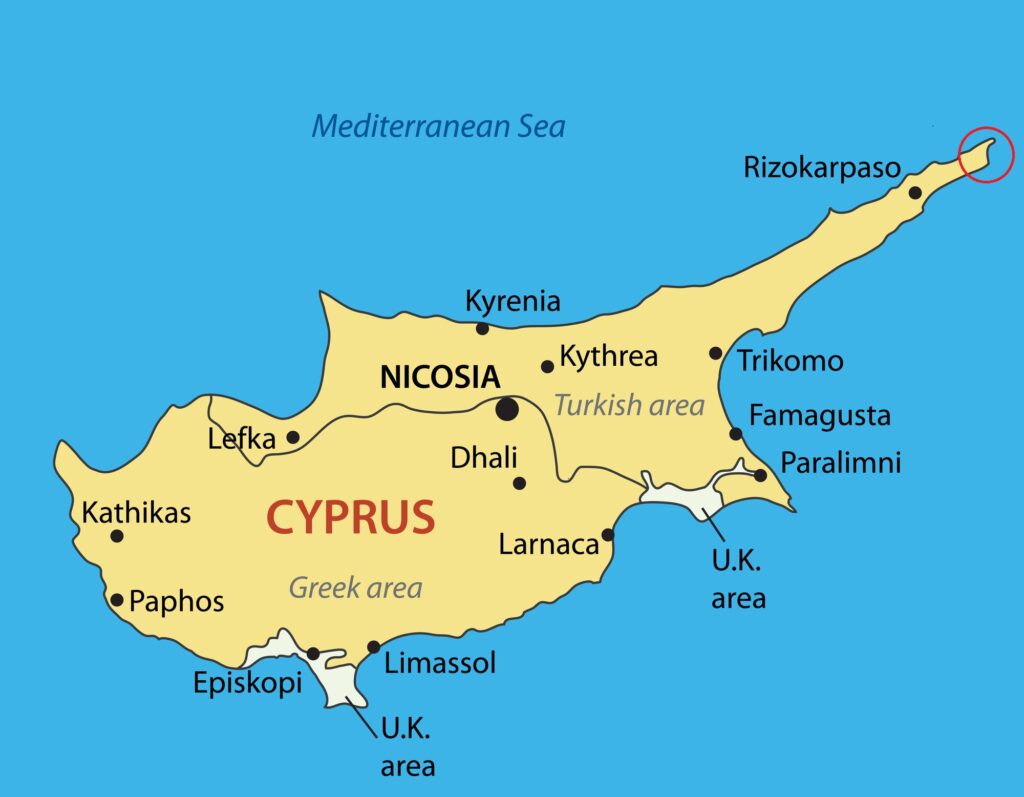
It’s very scenic. Little traffic, especially at this time of year.
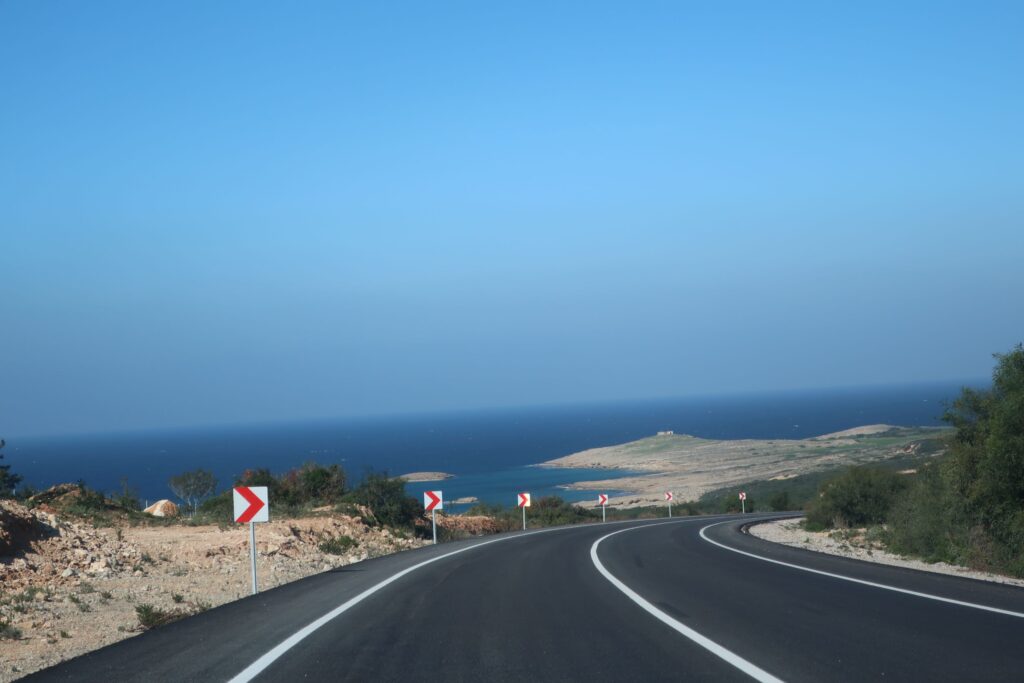
From time to time, we come across small Orthodox churches that have been repurposed into something else (because most of the Greek Cypriots fled to the south in 1974).
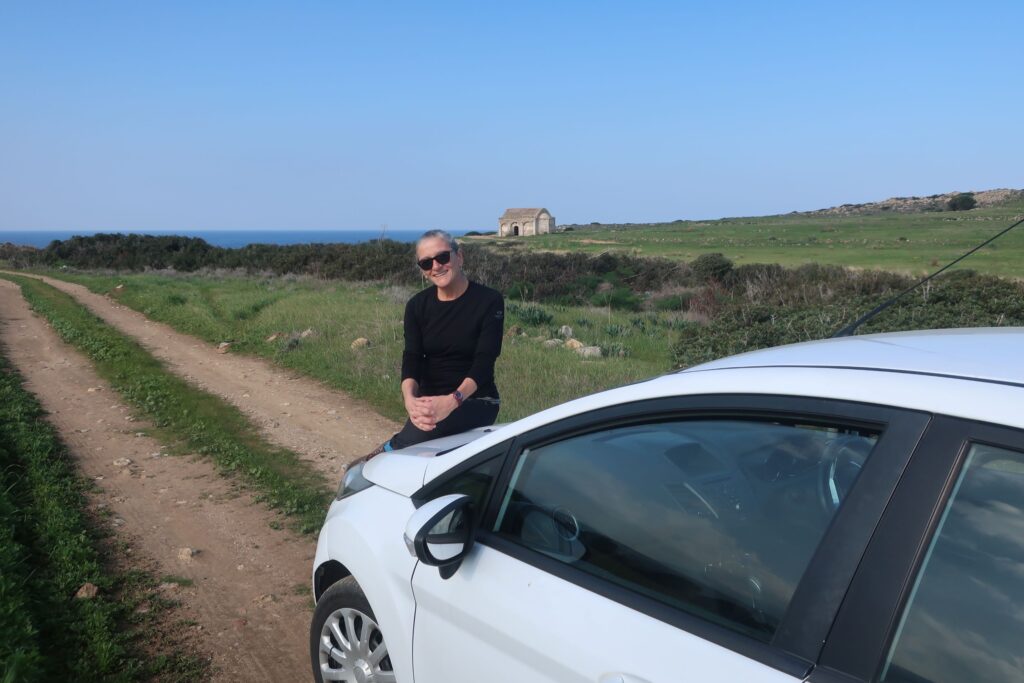
Another castle. This one is Kantara Castle.
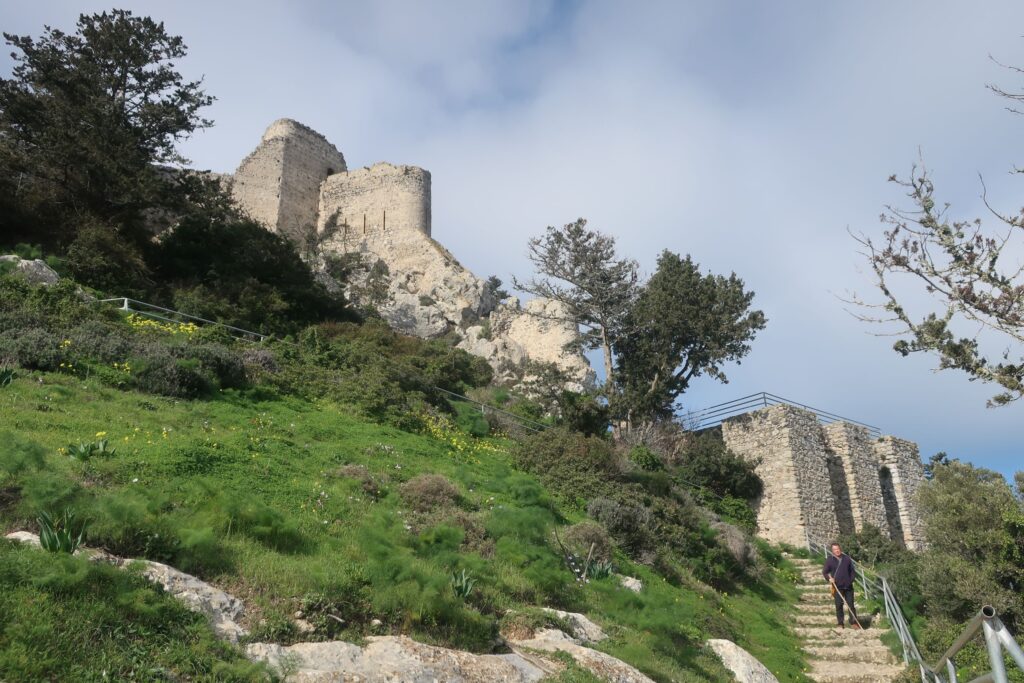
From the peak, you can see the Mediterranean to the North and to the South.
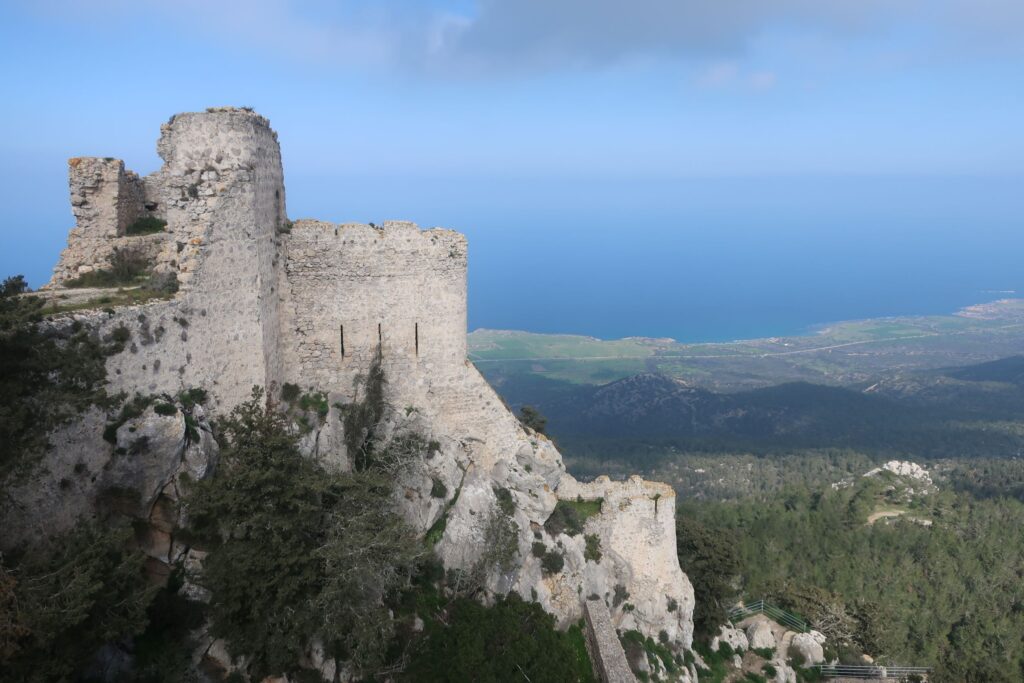
The coast is lovely on a sunny day.
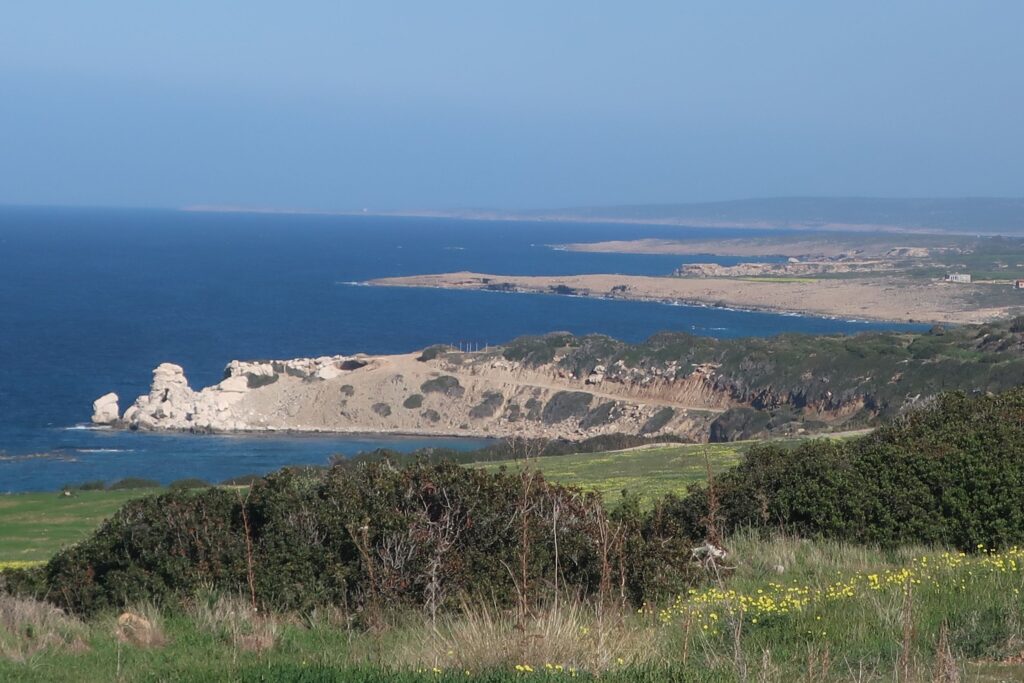
As we approach the tip of the peninsula, we see signs to beware of the feral donkeys that inhabit this area.
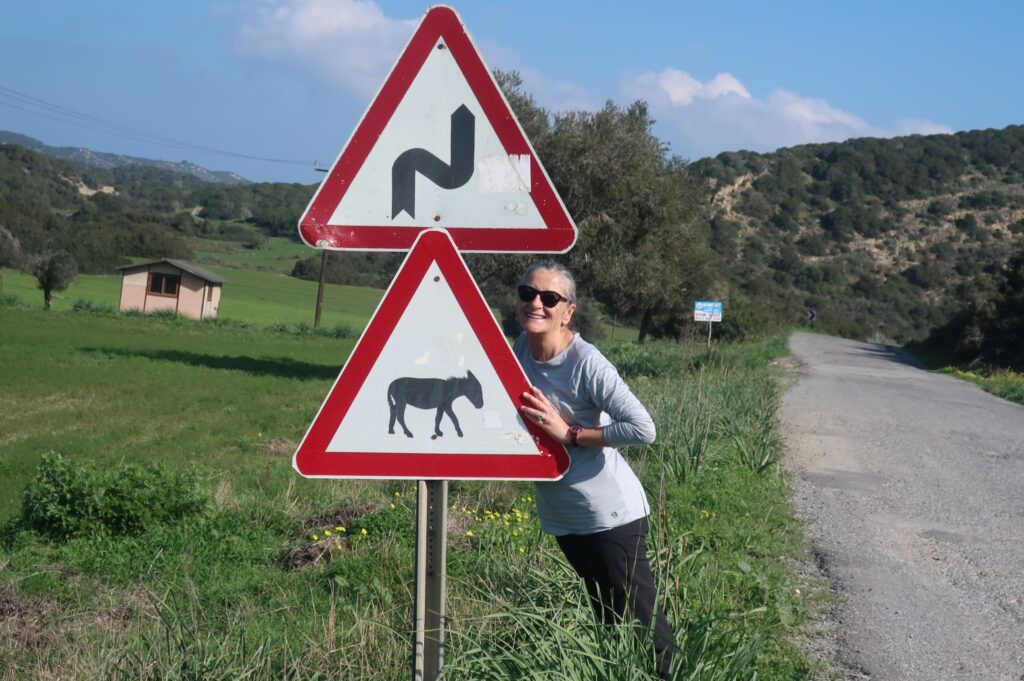
We come prepared with a bag of carrots. They’re obviously used to getting handouts. The younger ones are fuzzy and irresistibly cute.

Passing through Dipkarpaz, the last town of any size.

It’s very fertile around here – lots of lush green fields.
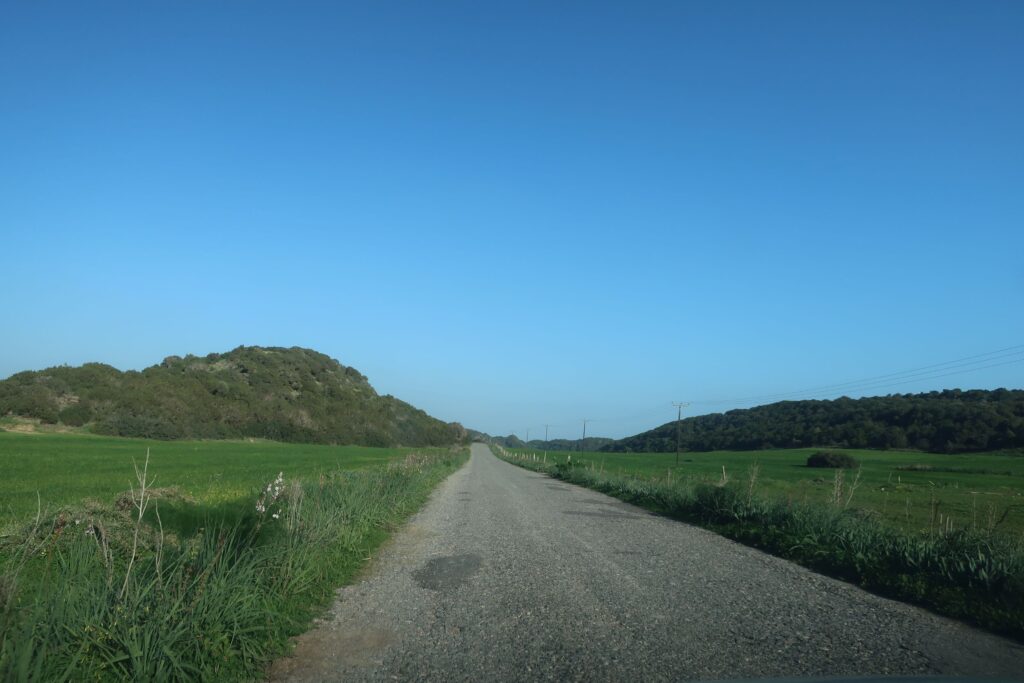
We spend a few nights in a stone house on the waterfront.
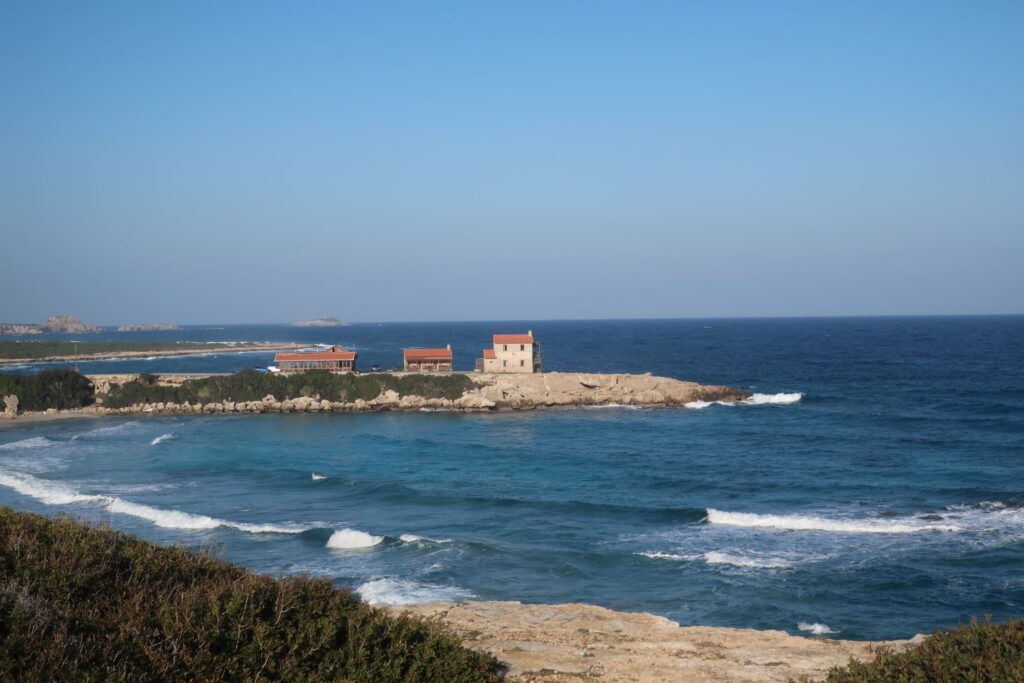
It’s so close to the sea, the sound of the waves can be heard all night.
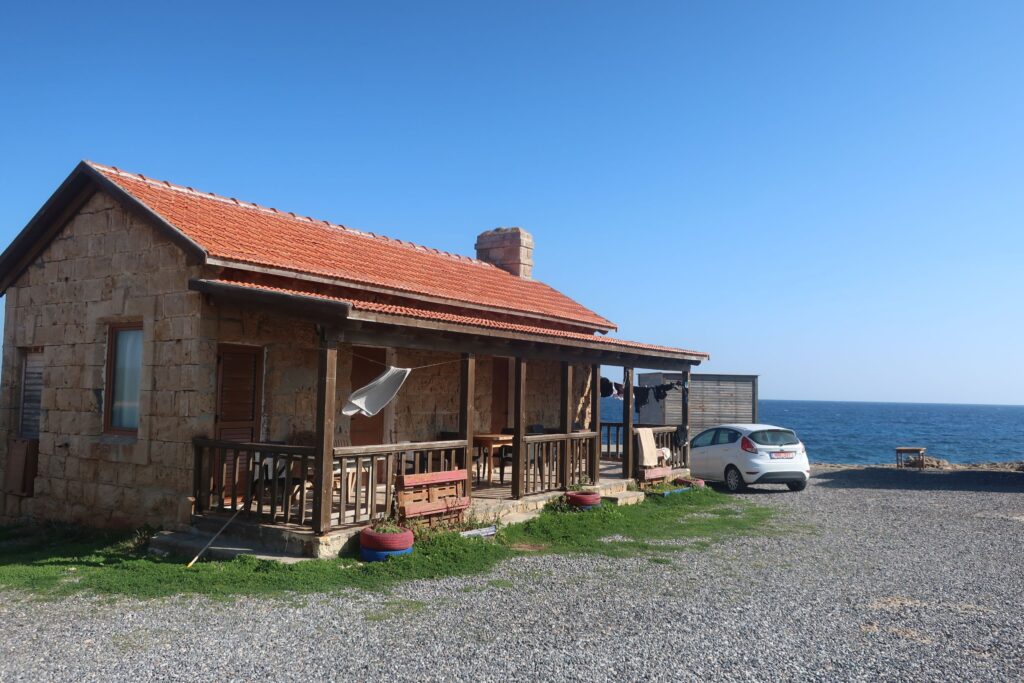
Heading back down the coast, we stop briefly at Golden Beach.
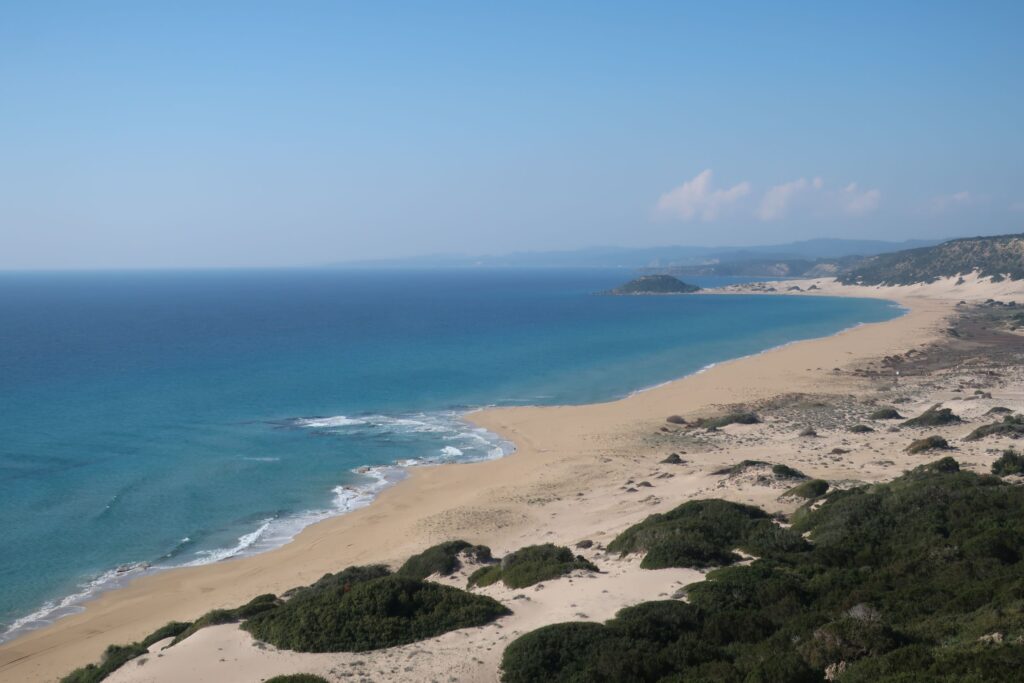
It would be nicer if there wasn’t so much garbage around. After fifty years of Turkish occupation, North Cyprus looks very much like Turkey. This includes the cavalier attitude most developing countries have to living amid mountains of trash.
Cyprus proper, on the other hand, looks like Europe.
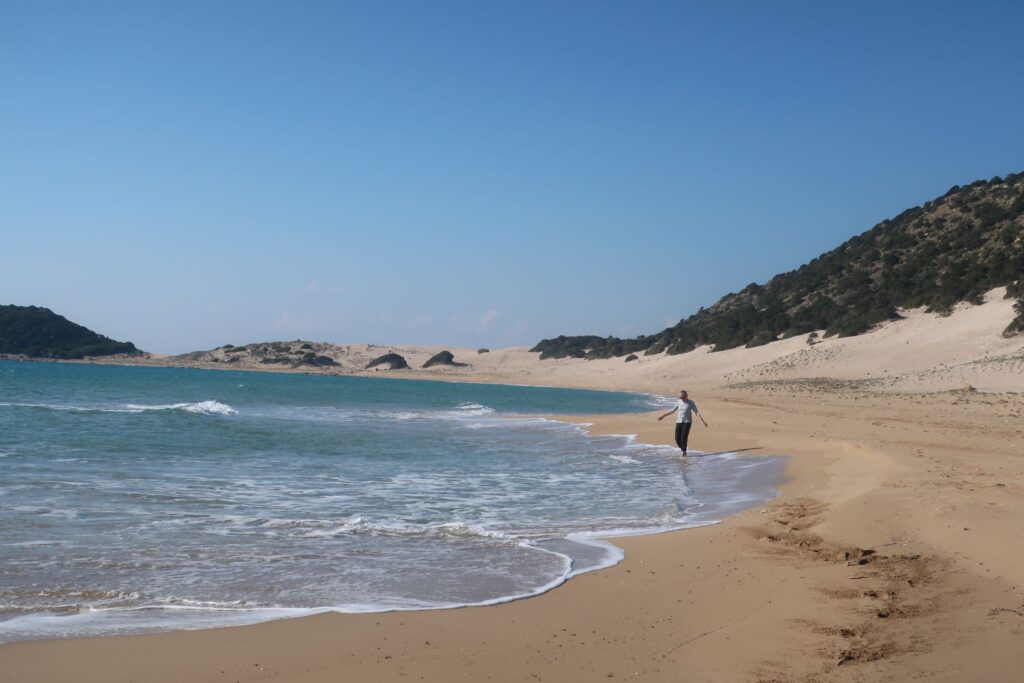
The road leading down to Famagusta Bay is bright with flowers. Again, there is almost no traffic.
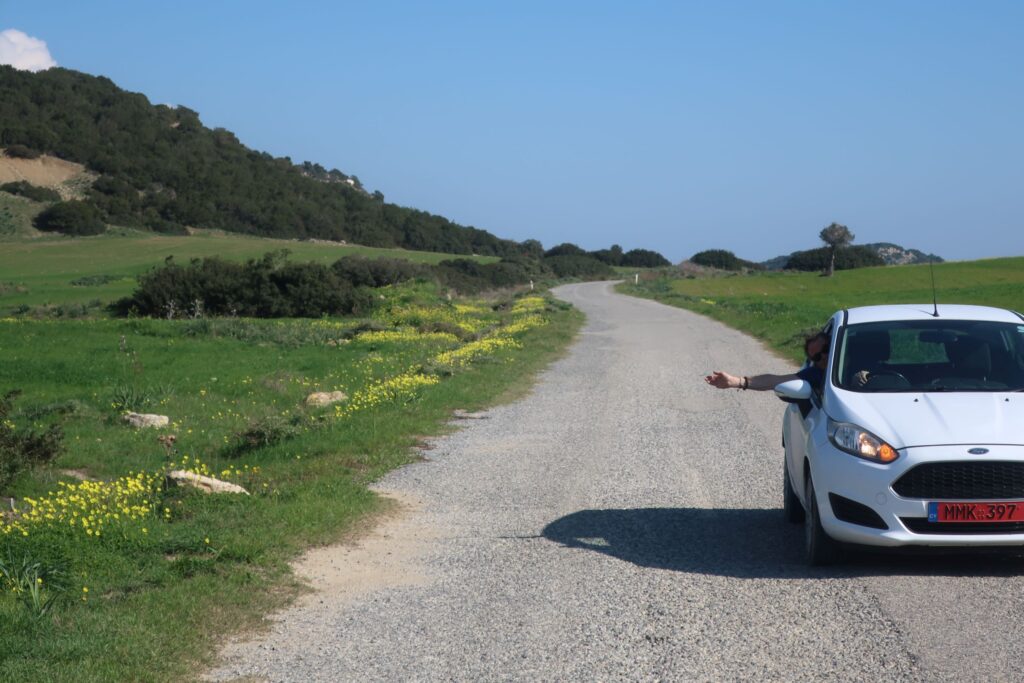
Famagusta is where we spend the next few days. It’s a walled city, full of historic buildings. Like the Lala Mustafa Pasha Mosque, formerly known as the Cathedral of St Nicholas.
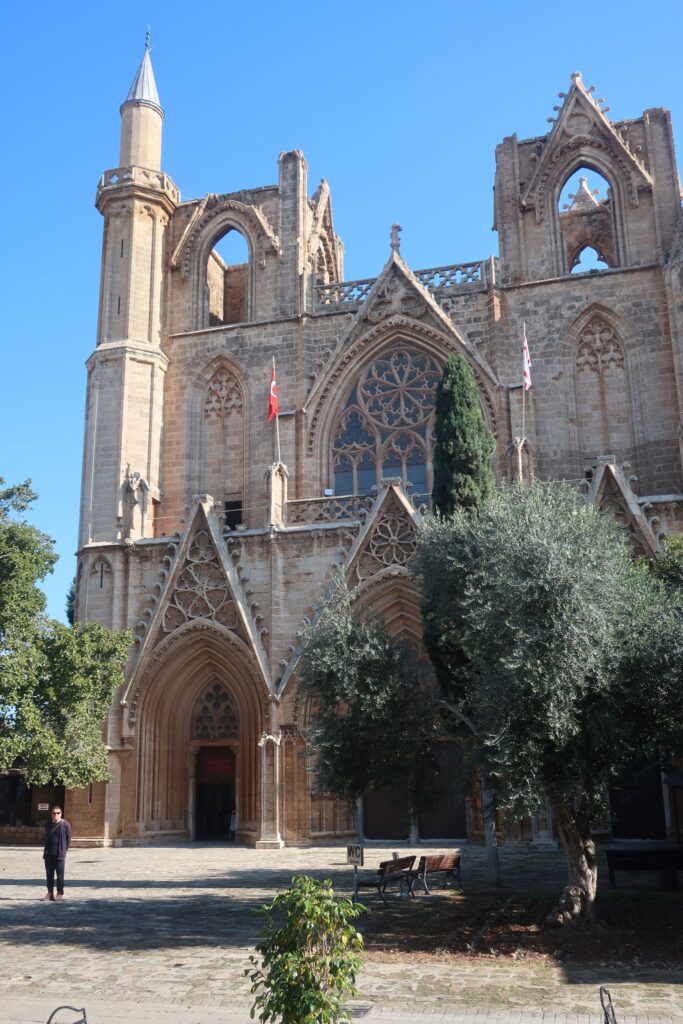
It’s interesting to speculate that there would be a lot more of these churches-turned-into-mosques if the Muslim armies had not been defeated at the Siege of Vienna or the Battle of Tours, to name just two pivotal events.
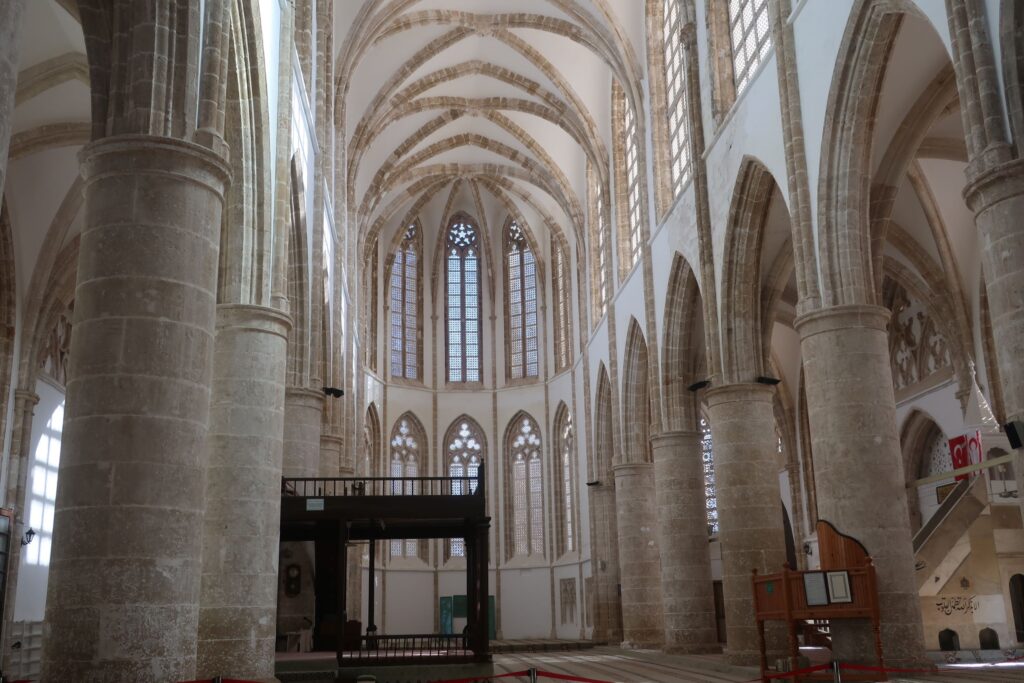
We stay at a location a few minutes walk from the Old Town.
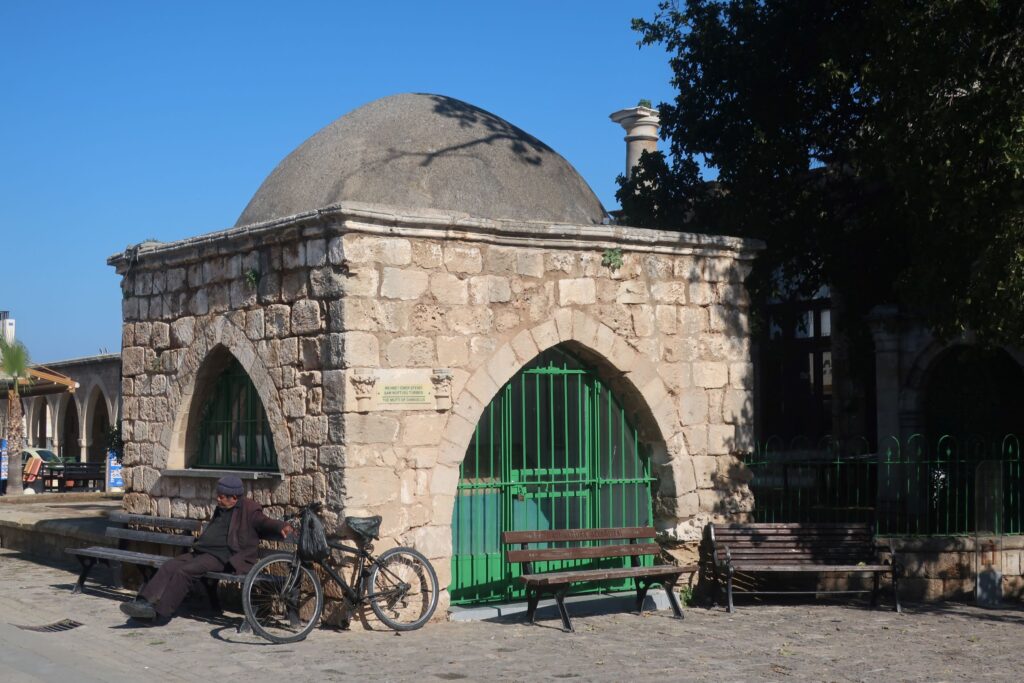
One of many churches that didn’t survive is St.George’s Cathedral.

The wall surrounding the city was built by the Lusignans and later improved by the Venetians. A major fortification is the Othello Castle.
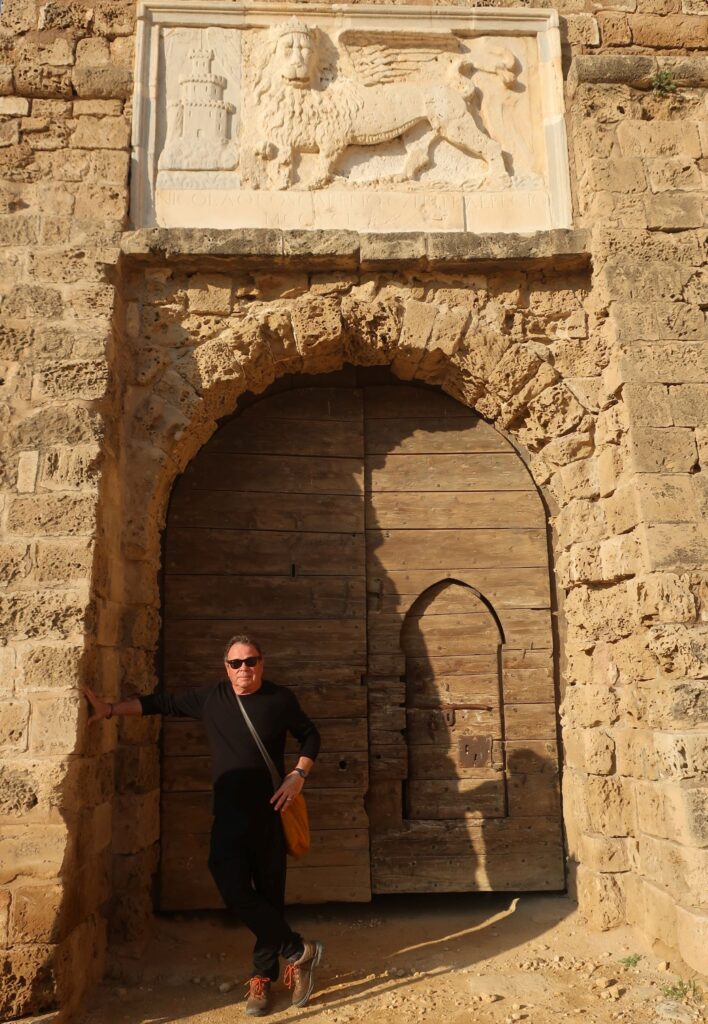
(The term ‘Othello Castle’ is a bit of fabricated tourist razzmatazz. In the play, Othello’s arrival point is described simply as ‘A Sea-port in Cyprus’. )
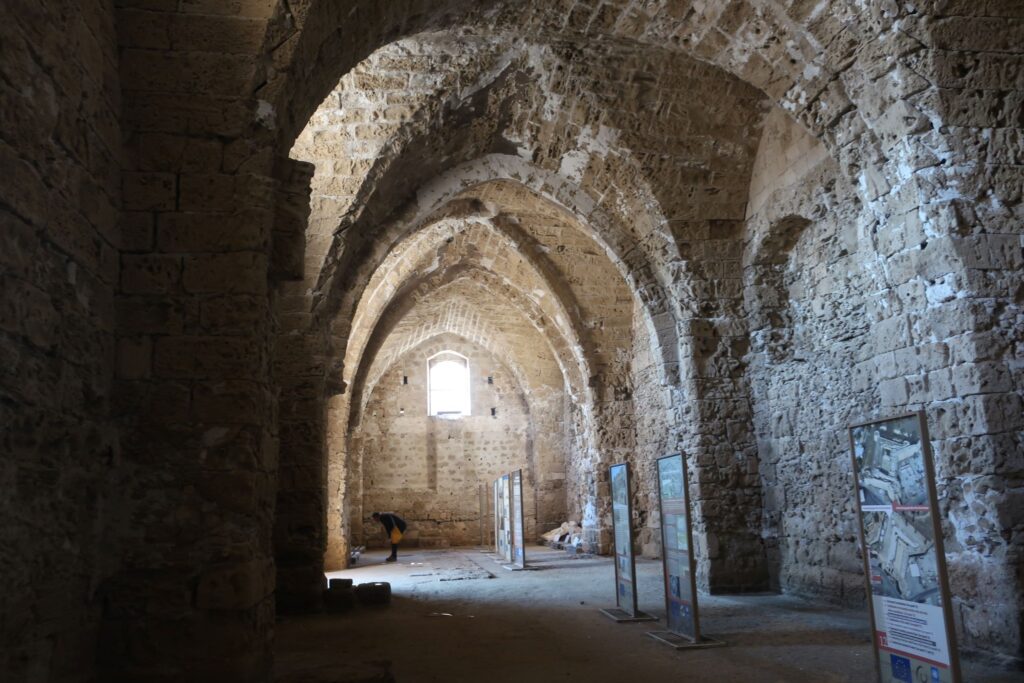
Sight or Insight of the Day
I remember years ago reading The World Without Us, a book that describes what the world will look like when humans are gone. There is a section in that book on the neighbourhood of Varosha to the south of Famagusta.
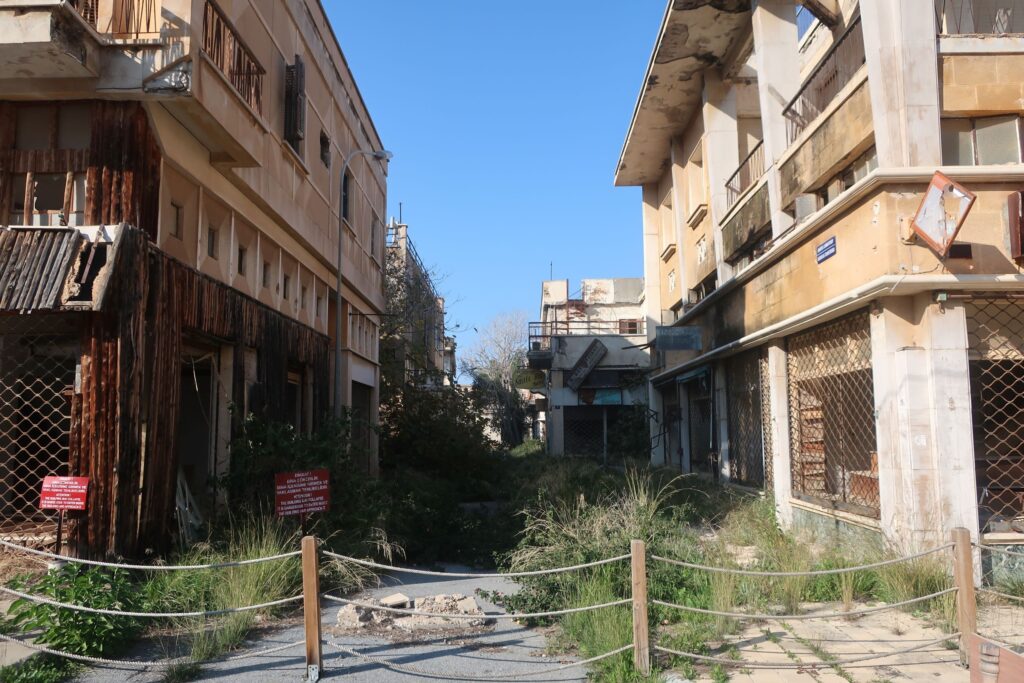
This was a beachy holiday spot until the Turkish invasion of 1974. The Greek Cypriot inhabitants fled for their lives, leaving behind a ghost town.
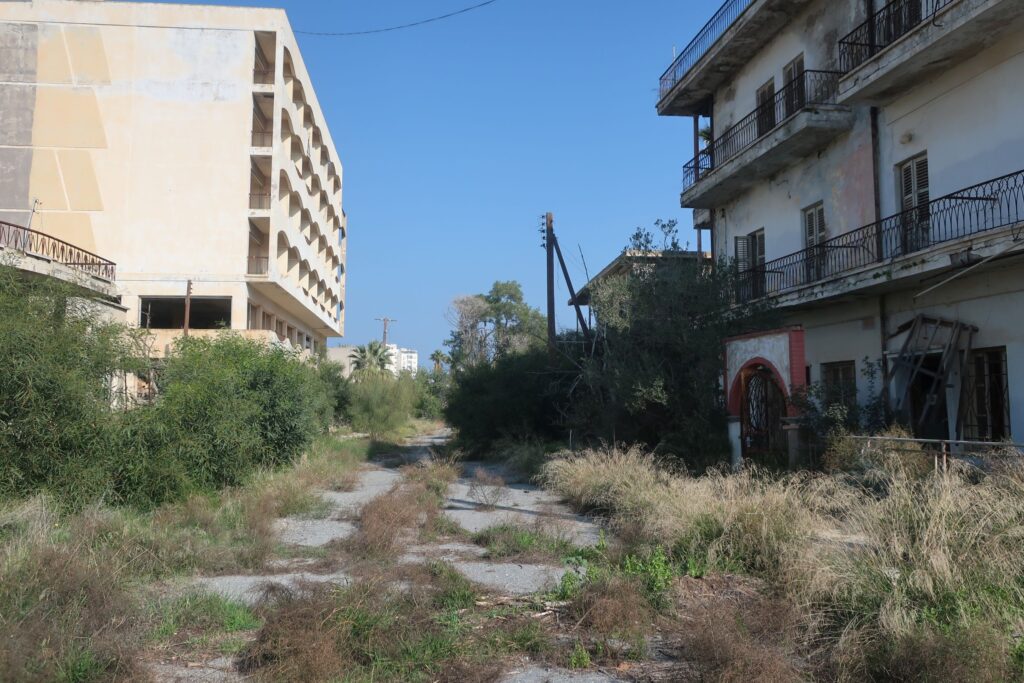
Until very recently, this was fenced with barbed wire and strictly off-limits to tourist and civilians.
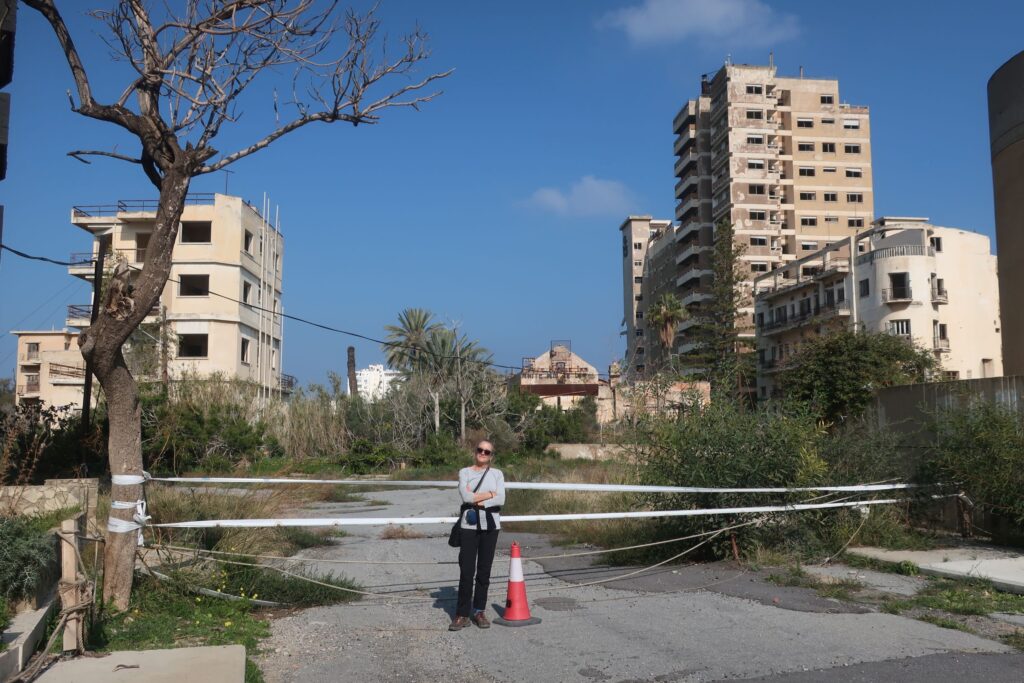
Now, it has become a macabre tourist attraction.
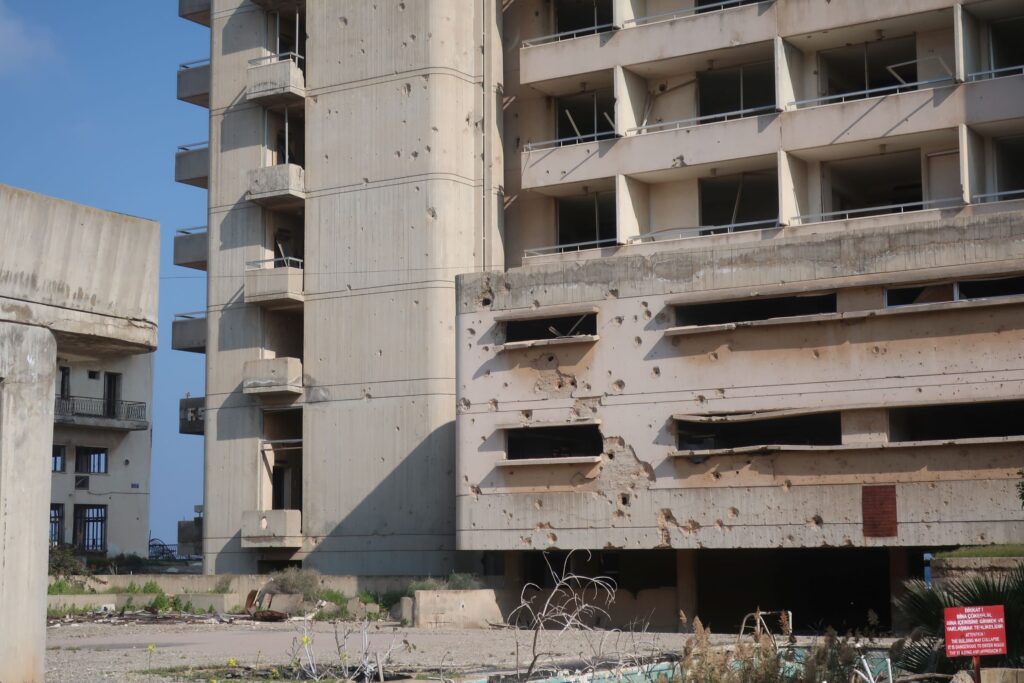
There is a UN post keeping an eye on things.
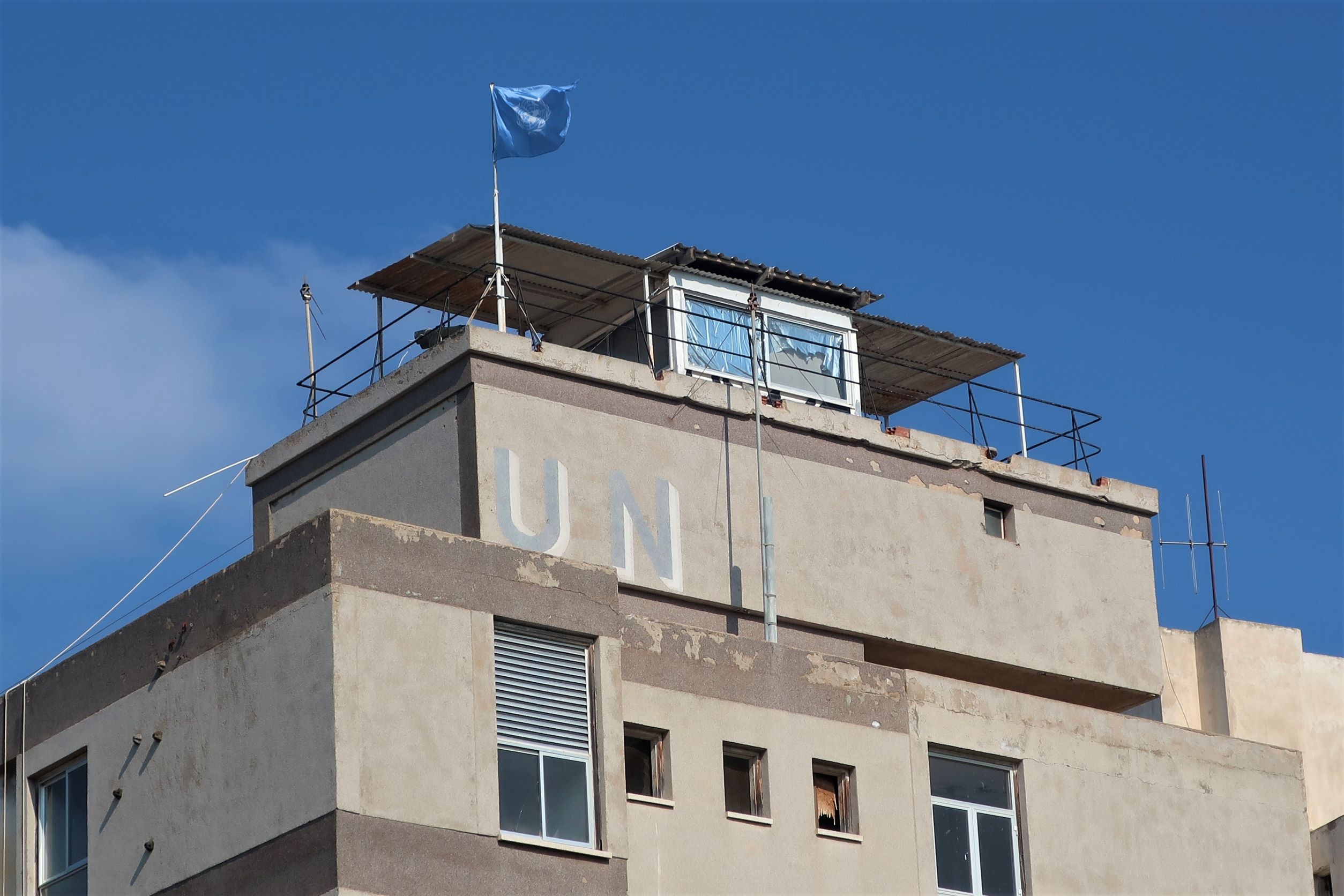
The bizarre abandoned resorts go on for miles down the coast.
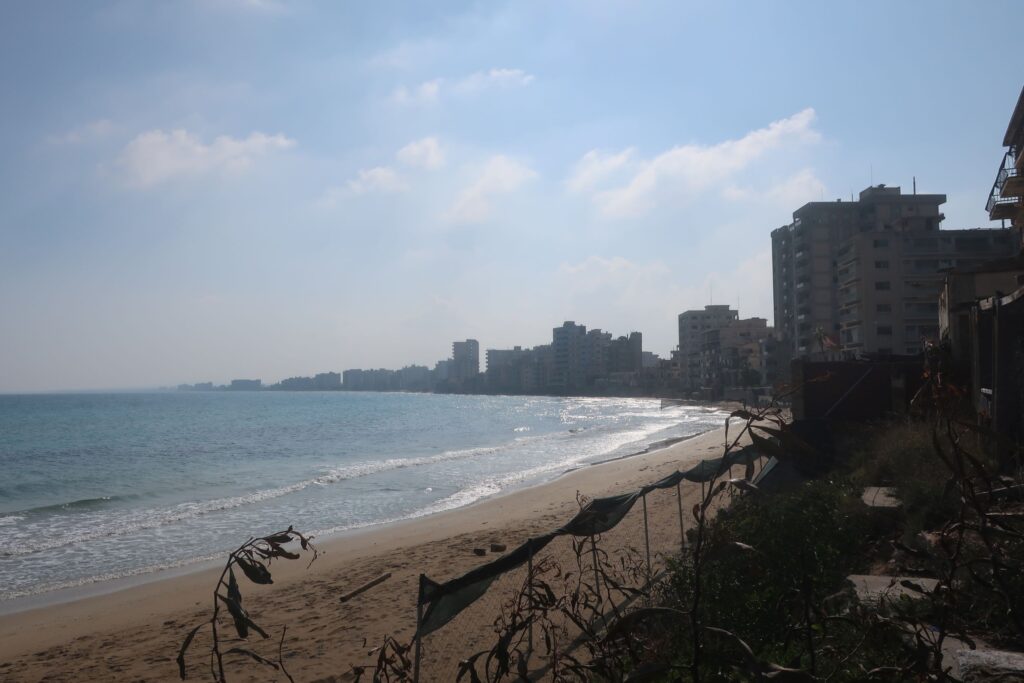
We both agree we’ve never seen anything like it. It’s like traveling in time to 1974. We take many photos, but you get the picture with this limited selection.
